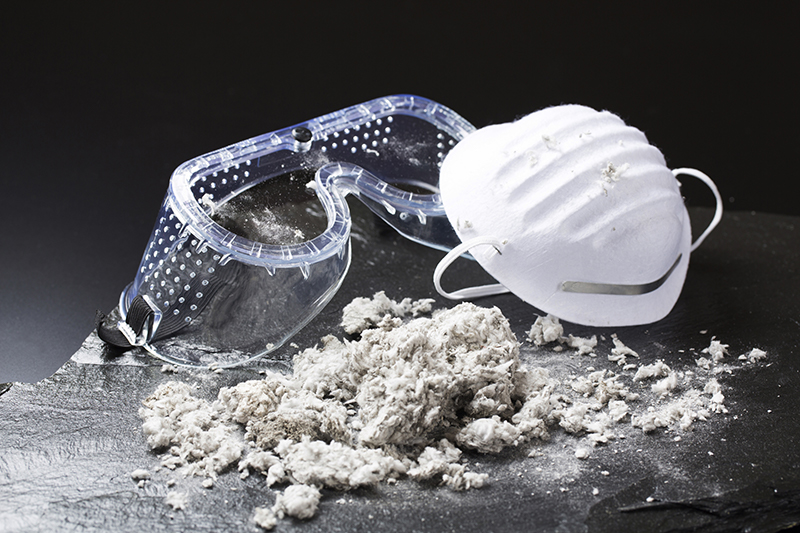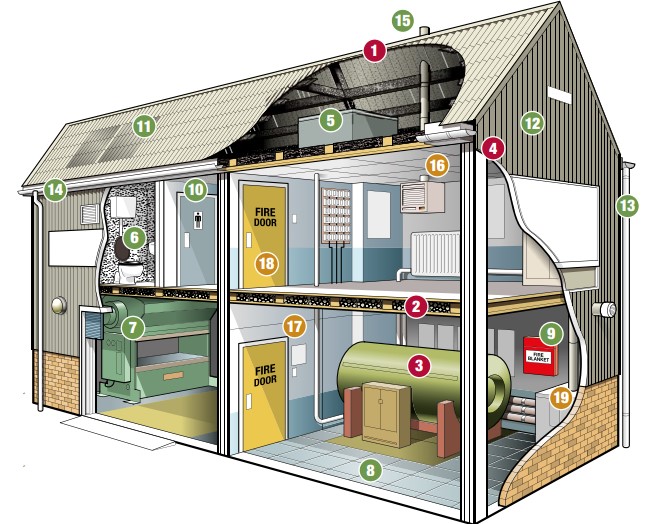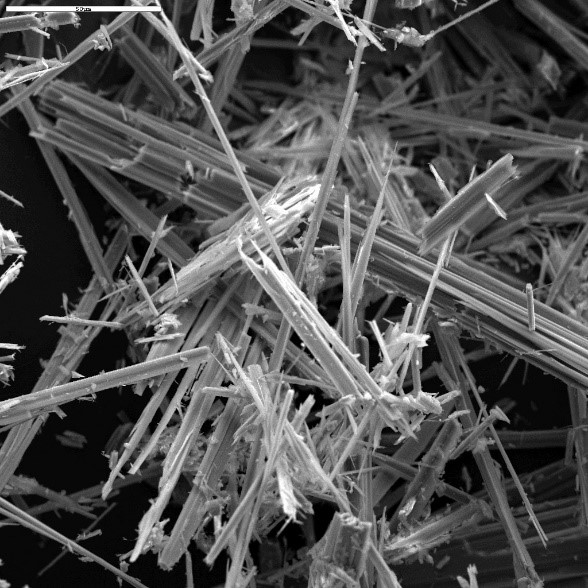Casella UK
Wolseley Rd, Kempston,Bedford MK42 7JY
+44(0)1234844100
info@casellasolutions.com



The use of asbestos dates back at least 4,500 years. Evidence found near Lake Juojärvi in Finland, shows that people used it to make pots and other cooking utensils. In Greece, from around 300 BC there was a reference to a material that is thought to be asbestos, the name derived from the ancient Greek word meaning “unquenchable” or “inextinguishable”.
Several hundred years later, ancient Roman scholar, Pliny the Younger (61-112 AD) wrote that slaves who mined and worked with asbestos became ill, though it would be nearly 2,000 years before scientists discovered the cause of this mysterious illness.
Once hailed as a ‘wonder material’, asbestos use was widespread as a building material because it was strong, cheap and, often only now thought of as a hazard in the construction industry, used for just about everything in the early 20th Century home, including hairdryers, toys, oven gloves, even clothing! Its excellent electrical insulating and heat resistant properties made it suitable for many diverse applications.
However, as far back as 1918, the U.S. Bureau of Labor released a report that revealed abnormally high risk of early death among asbestos workers and later, during the 1960s, further evidence emerged indicating that asbestos fibres posed a dangerous medical risk. Today, mention the word asbestos and it is probably safe to say that most people would know that it presents a danger to human health.
Asbestos containing materials can still be found in many buildings built before the year 2000 including houses, factories, offices, schools, hospitals etc and causes around 5000 deaths every year in the UK due to past exposure, according to the UK HSE [¹]. On a global scale it kills more than 107,000 people each year from World Health Organization (WHO) [²].
Asbestos could be ‘hiding’ in all kinds of places in the home such as pipe lagging, asbestos cement panels, vinyl tiles, soffits and gutters to name but a few (see figure 1) and likewise it can be found in industrial properties, sprayed on ceilings, beams and walls, used as rope seals and gaskets and other similar applications to those in the home (figure2).

Asbestos is a group of naturally occurring fibrous silicate minerals of which there are six types, including chrysotile, blue (crocidolite) and brown (amosite), the latter two banned in the UK in 1985.
It is composed of long, thin, fibrous crystals (figure 3), each fibre being composed of many microscopic "fibrils" which get released into the air when disturbed. It is virtually impossible to identify asbestos with the naked eye.
Much of the asbestos will be hidden in the fabric of the building as shown in the previous figures and it is better to leave it undisturbed if it is well maintained and in good condition but it becomes a potential problem when a building gets demolished or refurbished. Trades that are likely to disturb asbestos-containing materials include: -
Asbestos is one of the most important occupational carcinogens, causing about half of all deaths from occupational cancer. Inhalation of asbestos fibres can lead to very serious lung conditions which can take many decades to develop, often well into retirement and old age. Tragically by the time the effects are diagnosed it is often too late for effective treatment and normally proves fatal.
Diseases include mesothelioma, a cancer that affects the lining of the lungs and lining surrounding the lower digestive tract, asbestosis (scarring of the lungs) and pleural thickening. People with asbestosis are at an increased risk of lung cancer. In 2003, the Thirteenth Session of the Joint International Labour Organization (ILO)/WHO Committee on Occupational Health recommended that special attention should be paid to the elimination of asbestos-related diseases.
Despite the known health risks and its use strictly illegal in over 60 countries, including Japan, Australia, UK and all countries in the European Union, it continues to be used around the world, especially in Asia and Russia, and in small amounts in the USA.
The good news is that there is a downward trend and globally, asbestos mine production has fallen from 2.2 million metric tons in 2007 to approximately 1.2 million metric tons in 2020 with top producer Russia having an estimated current production of 790,000 tonnes as can be seen in figure 4[³] .

Figure 4 above: World production of Asbestos
Despite a general ban by the EPA, a complete asbestos ban has yet to be passed in the USA. There are numerous regulations in place at state and federal levels to protect Americans from exposure. A partial ban on asbestos was passed in 1989, however, many of the regulations were overturned and it is still legal for certain products to contain up to 1% of (chrysotile) asbestos according to the US Mesothelioma and Asbestos Awareness (MAA) Center [⁴].
The MAAC go on to state that in recent years, the EPA has been investigating the public health risk of asbestos to update regulations or lead to a possible ban. In April 2019, the EPA revisited their asbestos rulings and released the Significant New Use Rule (SNUR). The legislation mandates that after June 24, 2019, all asbestos-containing products that are no longer manufactured and new uses must be evaluated by the EPA before being introduced to the market. The regulation is meant to give the EPA time to determine if the product would pose a risk to the public and would allow them to require alterations to the product or halt production to protect public health.
According to an on-line article in Chemistry World [⁵] , signatories to the Rotterdam Convention, a treaty that governs the use of hazardous chemicals, met in May 2017 to discuss whether the chrysotile form of asbestos should be added to the hazardous substance list (the other five types of asbestos are already listed). The treaty requires countries that export listed substances to ensure that the receiving countries are fully informed of their health risks and that they consent to the trade.
The convention’s expert scientific body, the Chemical Review Committee, first recommended it be listed as a hazardous substance in 2006. However, the producer countries and some countries that still use chrysotile asbestos argue that this form of asbestos is safe if used correctly. The WHO, various public health bodies and the public health community disagree.
The Rotterdam Convention works by consensus among the 157 signatory countries; one objection can derail a listing. Belarus, India, Kazakhstan, Kyrgyzstan, Russia, Syria and Zimbabwe all blocked the move to ban chrysotile. There are ongoing efforts to change the terms of the convention so that a three-quarter majority is enough when a consensus proves impossible.
In conclusion, until the consensus is reached, and the convention passed, asbestos is still going to be used in many countries around the world. A complete global ban on the mining and use of asbestos along with strict licencing and enforcement of asbestos remediation or removal is the only way to prevent new exposure and killer diseases like mesothelioma. Personal exposure and area monitoring has its part to play and will be discussed in future articles.
References
1. a0.pdf (hse.gov.uk)
2. Chrysotile Asbestos, WHO (2014) ISBN 978 92 4 156481 6
3. Asbestos mine production top countries worldwide 2020 | Statista
4. Asbestos Legislation | History, Laws & Regulations (maacenter.org)
5. Asbestos, explained, Anthony King, ChemistryWorld.Com, June 2017